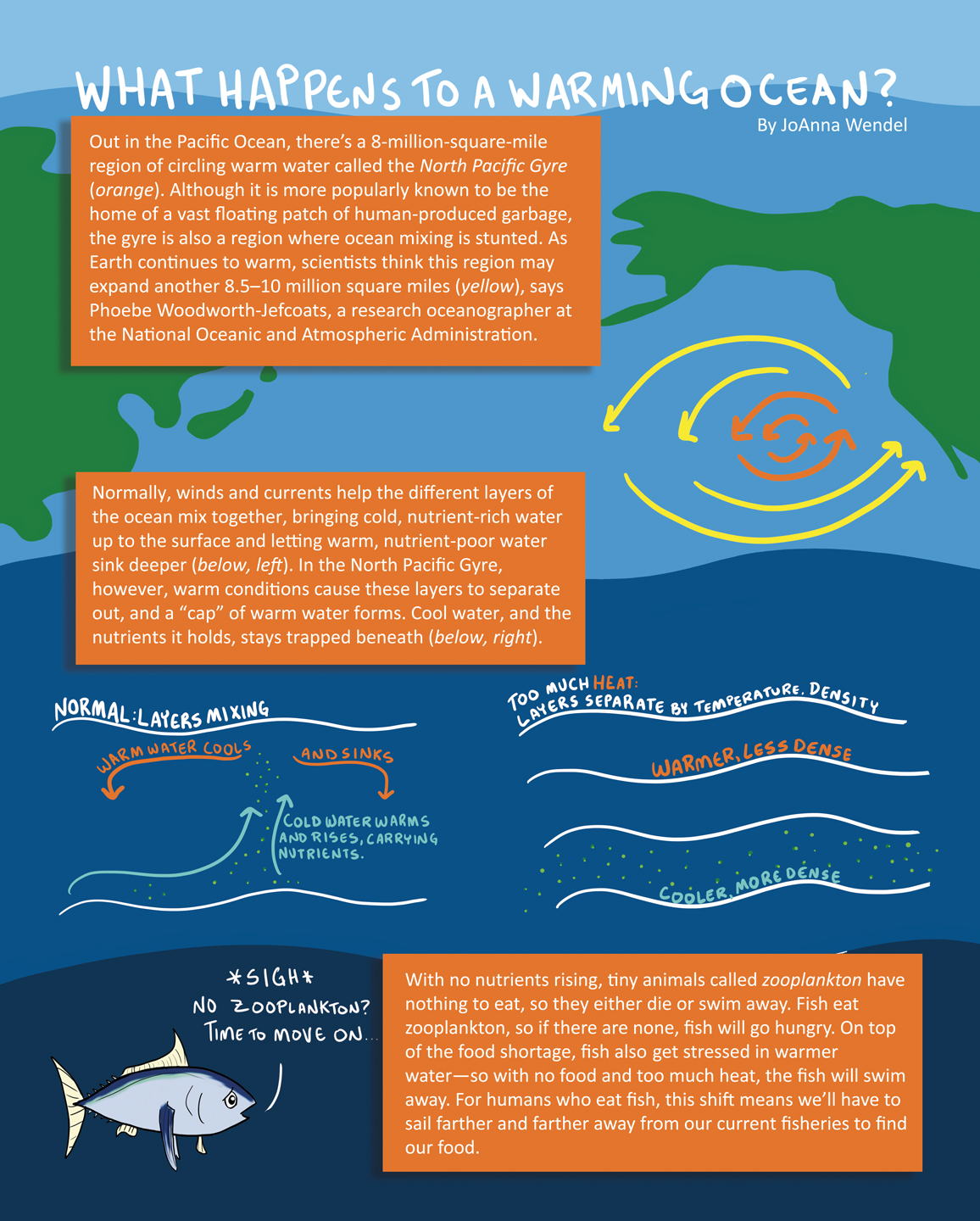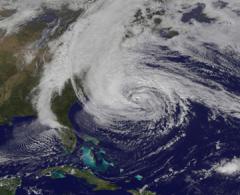
This Article From Issue
July-August 2018
Volume 106, Number 4
Page 200
Out in the Pacific Ocean, there's a 8-million-square-mile region of circling warm water called the North Pacific Gyre (orange, below right). Although it is more popularly known to be the home of a vast floating patch of human-produced garbage, the gyre is also a region where ocean mixing is stunted. As Earth continues to warm, scientists think this region may expand another 8.5–10 million square miles (yellow, below right), says Phoebe Woodworth-Jefcoats, a research oceanographer at the National Oceanic and Atmospheric Administration.

Normally, winds and currents help the different layers of the ocean mix together, bringing cold, nutrient-rich water up to the surface and letting warm, nutrient-poor water sink deeper (above, left). In the North Pacific Gyre, however, warm conditions cause these layers to separate out, and a "cap" of warm water forms. Cool water, and the nutrients it holds, stays trapped beneath (above, right).
With no nutrients rising, tiny animals called zooplankton have nothing to eat, so they either die or swim away. Fish eat zooplankton, so if there are none, fish will go hungry. On top of the food shortage, fish also get stressed in warmer water—so with no food and too much heat, the fish will swim away. For humans who eat fish, this shift means we'll have to sail farther and farther away from our current fisheries to find our food.

American Scientist Comments and Discussion
To discuss our articles or comment on them, please share them and tag American Scientist on social media platforms. Here are links to our profiles on Twitter, Facebook, and LinkedIn.
If we re-share your post, we will moderate comments/discussion following our comments policy.